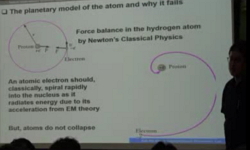This article shows how the adoption of polishing as the back-lapping process of semiconductor wafers influences the flexural fracture strength of their individually diced chips. According to the experimental results of this study, a polishing powder w...
http://chineseinput.net/에서 pinyin(병음)방식으로 중국어를 변환할 수 있습니다.
변환된 중국어를 복사하여 사용하시면 됩니다.
- 中文 을 입력하시려면 zhongwen을 입력하시고 space를누르시면됩니다.
- 北京 을 입력하시려면 beijing을 입력하시고 space를 누르시면 됩니다.

반도체 웨이퍼의 폴리싱 가공이 개별 칩들의 기계적 손상에 미치는 영향 = Effect of Polishing Process of a Semiconductor Wafer on the Fracture Mechanics of Diced Chips
한글로보기https://www.riss.kr/link?id=A101804167
- 저자
- 발행기관
- 학술지명
- 권호사항
-
발행연도
2016
-
작성언어
Korean
- 주제어
-
등재정보
KCI등재
-
자료형태
학술저널
- 발행기관 URL
-
수록면
204-209(6쪽)
-
비고
학회 요청에 의해 무료로 제공
- DOI식별코드
- 제공처
- 소장기관
-
0
상세조회 -
0
다운로드
부가정보
다국어 초록 (Multilingual Abstract)
This article shows how the adoption of polishing as the back-lapping process of semiconductor wafers influences the flexural fracture strength of their individually diced chips. According to the experimental results of this study, a polishing powder with a particle size of approximately 1 um in diameter can meaningfully reduce the fracture strength of chips with a thickness of 50 um. Particularly, when the diced chips have polishing-induced defects formed along a (110)-dicing plane, they reveal the lowest fracture strength. An in-situ examination details how polishing causes sharp notches on the back surface of the chips which provide preferential sites for chip cracking during a flexural test.
동일학술지(권/호) 다른 논문
-
316L 스테인리스 강에서 단 범위 규칙화 반응과 규칙화 처리가 미세조직에 미치는 영향
- 대한금속재료학회(구 대한금속학회)
- 김성수 ( Sungsoo Kim )
- 2016
- KCI등재
-
상온분말분사법에 의해 Yttria Stabilized Zirconia 코팅된 STS304 표면 경도 특성
- 대한금속재료학회(구 대한금속학회)
- 임지호 ( Ji-ho Lim )
- 2016
- KCI등재
-
복합 밀링 공정에 따른 철계 산화물분산강화 합금의 미세조직 및 기계적 특성 변화 연구
- 대한금속재료학회(구 대한금속학회)
- 설재복 ( Jae-bok Seol )
- 2016
- KCI등재
-
고주파유도 가열에 의한 나노구조 WC와 WC-TiAl 급속소결 및 기계적 성질
- 대한금속재료학회(구 대한금속학회)
- 곽봉원 ( Bong-won Kwak )
- 2016
- KCI등재
분석정보
연관 공개강의(KOCW)
-

Fundamentals of Reliability and defects –basics and selected topics for advanced materials and technologies
광주과학기술원 루이지 판티사노 -

Semiconductor Devices on Single Crystalline and Unconventional Substrates
광주과학기술원 찰스 투 -

Semiconductor memory device
광주과학기술원 황현상, 알렉스 이그나티브 -

Quantum mechanics for semiconductor
경북대학교 김학린 -

반도체제조공학
세종대학교 이원준





 KISS
KISS


